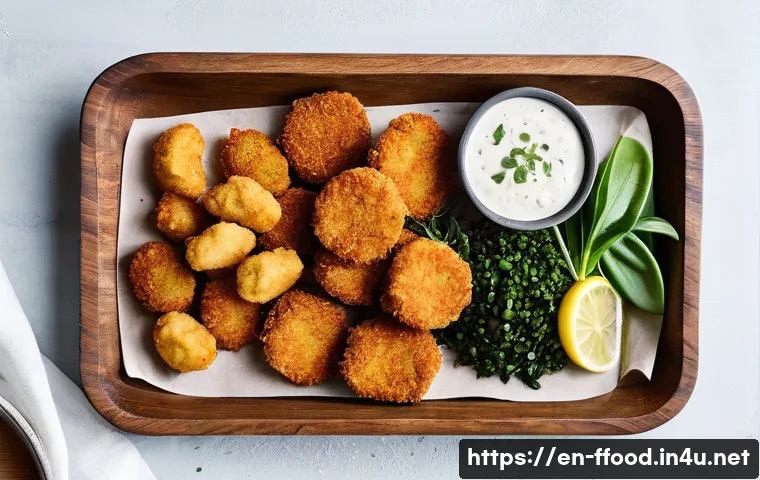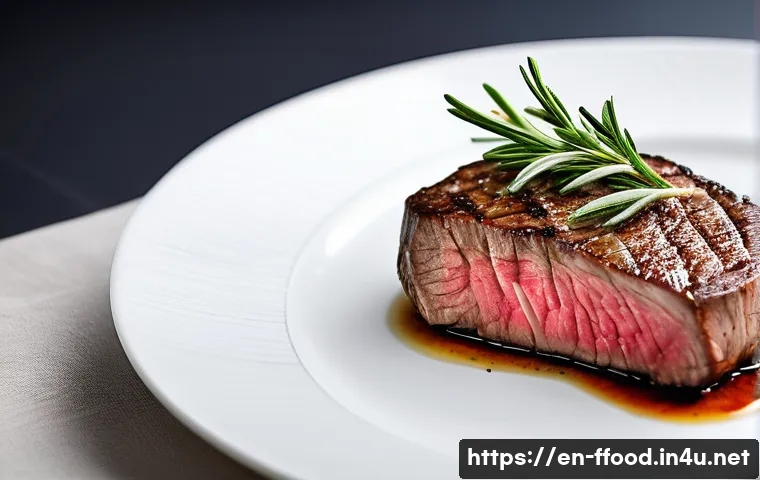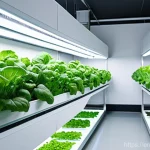Hey there, fellow food explorers! Have you ever paused to think about what’s on your plate and where it comes from? With all the buzz around our planet’s health and our own well-being, I’ve personally noticed a massive shift in how we approach food, especially when it comes to meat.

It’s truly exciting to see how sustainable alternative meats are not just a passing trend, but a real game-changer, evolving incredibly fast to offer delicious, planet-friendly options that were unimaginable just a few years ago.
From innovative plant-based creations to the fascinating world of cultivated protein, the future of our meals is looking surprisingly appetizing and responsible.
Let’s get into the nitty-gritty and find out exactly what’s cooking in this space!
The Rise of Plant-Powered Plates
A Delicious Revolution on Our Dinner Tables
Honestly, it feels like just yesterday ‘vegetarian’ meant a sad salad or a bland bean burger. But oh, how times have changed! I’ve personally seen a complete revolution in the plant-based aisle, and it’s not just for vegans anymore. We’re talking about incredible innovations that mimic the taste and texture of traditional meat so convincingly, you’d be hard-pressed to tell the difference. From juicy plant-based burgers that sizzle on the grill to incredibly versatile grounds perfect for tacos or spaghetti Bolognese, the options are truly endless and genuinely delicious. I remember trying my first really good plant-based sausage and being utterly blown away by how satisfying it was. It wasn’t just ‘good for a plant-based option’; it was just plain good. This shift isn’t just about ethics or health, though those are huge motivators; it’s about culinary creativity and expanding our palates in ways we never thought possible. It’s truly exciting to experiment with these new ingredients in my own kitchen and discover how easily they fit into beloved family recipes, often enhancing them with new flavors and textures. The widespread acceptance and growth of brands like Beyond Meat and Impossible Foods in mainstream supermarkets and even fast-food chains truly underscore how far we’ve come. It’s no longer a niche market; it’s a global culinary movement that’s gaining serious momentum.
Unpacking the Appeal of Plant-Based Innovation
So, what’s the secret sauce behind this massive shift? It’s a fascinating blend of scientific ingenuity and culinary artistry, really. Companies are using everything from pea protein and soy to mushrooms and jackfruit, leveraging clever processing techniques to achieve that meaty chew and rich umami flavor we crave. For instance, the way they’ve engineered plant-based chicken to pull apart like real chicken or developed bacon that crisps up perfectly – it’s genuinely impressive. I’ve spent countless hours in my kitchen experimenting with different brands, learning which ones work best for various dishes. Some brands excel in replicating beef, while others have absolutely nailed poultry textures. It’s like a whole new world of ingredients has opened up, giving us so much more flexibility and choice, regardless of our dietary preferences. This meticulous approach to texture and flavor development is what truly elevates these products from mere substitutes to legitimate culinary contenders on their own merits. The focus isn’t just on taste anymore; it’s on the entire sensory experience, from the sizzle in the pan to the mouthfeel and aroma, making the transition for meat-lovers incredibly smooth and enjoyable.
Beyond the Burger: Innovations in Alternative Proteins
Exploring the Delicious Diversity of Alt-Meat
When we talk about alternative meats, it’s so easy for our minds to immediately jump to those incredible plant-based burgers. And while they are phenomenal, believe me, the innovation in this space goes so much further! I’ve been utterly fascinated by the sheer variety emerging from food tech companies – we’re seeing everything from plant-based seafood that perfectly mimics the flakiness of cod or the chewiness of shrimp, to incredibly realistic chicken nuggets that my own kids devour without a second thought. It’s not just about replicating whole cuts anymore; it’s about creating entirely new protein structures and flavor profiles that stand on their own. For instance, I recently tried some plant-based calamari, and I honestly couldn’t believe how close it was to the real thing – the texture, the slight chew, even the subtle ocean-like flavor was there. These products are truly pushing the boundaries of what we thought was possible with plant-based ingredients, opening up a whole new world of culinary possibilities that extend far beyond your typical weekend BBQ. It makes meal planning so much more exciting when you realize you can recreate almost any dish with a sustainable twist, adding a dash of adventure to your cooking.
Future-Forward Flavors: From Seafood to Steak
What really excites me is the sheer audacity of the innovation. Companies aren’t just content with simple ground meat alternatives; they’re tackling complex textures and unique flavors. Think about the intricate marbling of a steak or the delicate flakiness of a fish fillet – these are huge challenges, but the advancements being made are astounding. We’re seeing fungi-based proteins being fermented to create incredibly savory and meat-like textures, and even precision fermentation being used to create specific proteins and fats that contribute to the authentic taste of meat, but without the animal. I predict that in the very near future, we’ll see plant-based and cultivated versions of almost every traditional meat product on the market, each one offering a uniquely satisfying experience. It’s a testament to human ingenuity and our collective desire to find more sustainable ways to feed a growing global population without compromising on the joy of eating. I genuinely feel like we’re on the cusp of a culinary golden age where ethical and delicious food options are becoming the norm.
Cultivated Meats: The Science of Sizzle
Real Meat, No Animal Harm: The Breakthrough
Now, if plant-based options are exciting, then cultivated meat – sometimes called ‘cell-based’ or ‘lab-grown’ meat – feels like something straight out of a sci-fi movie, but it’s happening right now! This is where scientists grow real animal cells, without having to raise or slaughter an animal. Think about that for a second. It’s real meat, with the exact same biological structure and taste, but it’s produced in a controlled environment. I remember reading about it years ago and thinking, “that’ll never actually happen,” but here we are, seeing it move from labs to regulatory approval in places like the US and Singapore. The implications for animal welfare, food security, and environmental sustainability are absolutely enormous. It’s still in its early stages of commercial availability and cost-effectiveness, but the progress is incredibly rapid. I’m truly on the edge of my seat waiting for the day I can walk into my local butcher shop (or maybe a specialized market) and pick up a cultivated steak. The idea of enjoying a guilt-free, animal-friendly steak that tastes exactly like the real deal is, frankly, mind-blowing and represents a truly ethical leap forward in how we consume animal protein. It’s a paradigm shift in how we think about meat production, moving away from traditional farming and towards a more technologically advanced and controlled system.
The Road Ahead for Cell-Based Delicacies
While the technology is incredibly promising, it’s important to acknowledge that cultivated meat is still facing some hurdles. Scaling production to meet global demand, bringing down costs to be competitive with traditional meat, and gaining widespread consumer acceptance are all significant challenges. However, the investment and scientific breakthroughs happening in this sector are truly astounding. I’ve been following the developments closely, and the speed at which companies are innovating is truly inspiring. We’re talking about advancements in bioreactor technology, cell line optimization, and nutrient mediums that are constantly improving efficiency. The goal is not just to create a substitute, but to produce high-quality, delicious meat that is inherently more sustainable and ethical. I anticipate that within the next decade, we’ll see cultivated meat become a more common sight, perhaps starting in high-end restaurants and gradually making its way into our everyday grocery carts. It’s a journey, but one that promises a revolutionary future for food.
The Environmental Impact: A Greener Future for Food
Minimizing Our Carbon Hoofprint
For me, one of the biggest drivers behind exploring alternative meats has always been the environment. I’ve personally seen the devastating effects of climate change, and it’s impossible to ignore the significant footprint that traditional animal agriculture leaves on our planet. This is where sustainable alternative meats truly shine. They typically require far less land, water, and produce fewer greenhouse gas emissions compared to conventional meat production. Think about the Amazon rainforest being cleared for cattle ranching, or the vast amounts of water used to raise livestock – it’s a staggering picture. Switching to plant-based or cultivated options, even just a few meals a week, can collectively make a massive difference. I feel a real sense of accomplishment knowing that my dinner choice isn’t contributing to those environmental burdens but is actively supporting a more sustainable food system. It’s a powerful way each of us can vote with our forks for a healthier planet, without sacrificing flavor or culinary enjoyment. This focus on sustainability isn’t just a trend; it’s becoming a fundamental necessity for the future of our food supply and the health of the Earth. It’s about securing a viable future for generations to come, and our food choices play a surprisingly large role in that.
| Environmental Factor | Traditional Beef Production | Plant-Based Alternatives (Avg.) |
|---|---|---|
| Greenhouse Gas Emissions | High (e.g., 27 kg CO2e/kg) | Significantly Lower (e.g., 2.5 kg CO2e/kg) |
| Land Use | Very High (e.g., 100+ m²/kg) | Much Lower (e.g., 1-10 m²/kg) |
| Water Use | High (e.g., 15,000+ liters/kg) | Lower (e.g., 1,000-4,000 liters/kg) |
| Eutrophication Potential | High | Lower |
Beyond Emissions: Water and Land Conservation
It’s not just about greenhouse gases, although that’s a massive part of the equation. The demands of animal agriculture on our planet’s freshwater resources are staggering. Producing a single pound of beef, for example, can require thousands of gallons of water, a resource that is becoming increasingly scarce in many parts of the world. Then there’s the land usage – vast tracts of forests are cleared for pasture and to grow feed crops, leading to deforestation and habitat loss. Alternative meats dramatically reduce these environmental pressures. Plant-based proteins generally use significantly less water and land, and cultivated meat, once scaled, promises even greater efficiencies in these areas, as it eliminates the need for vast pastures and feed crops altogether. I find it incredibly empowering that by simply choosing a different option at the grocery store, I can contribute to preserving precious ecosystems and conserving vital resources. It really makes you feel like you’re part of a larger, positive movement towards a more regenerative food system.
Navigating the Supermarket Aisle: What to Look For
Decoding Labels and Discovering New Favorites
Walking into a supermarket these days, the sheer number of alternative meat options can be a little overwhelming, right? I totally get it! But trust me, with a few tips, you’ll be a pro in no time. First, always check the ingredients list. Look for whole, recognizable ingredients where possible, and be mindful of sodium content if that’s a concern for you. Different brands have different flavor profiles and textures, so don’t be afraid to experiment! I’ve learned through trial and error that some plant-based burgers hold up better on the grill, while others are perfect for stovetop frying. For things like plant-based chicken, I often look for brands that have a good fiber structure to replicate that shreddable quality. Also, keep an eye out for certifications like non-GMO or organic, if those are important to you. Many brands are making a real effort to be transparent about their sourcing and production methods. And here’s a pro tip: don’t be afraid to check out reviews online or ask friends for their recommendations – word of mouth is often the best guide when exploring new products in this rapidly expanding market. It’s like a treasure hunt, and finding a new favorite is always a win! Remember, your preferences might evolve, and that’s perfectly normal.
Tips for a Smooth Transition to Sustainable Eating
Making the switch, whether it’s full-time or just cutting back a few days a week, should be an enjoyable journey, not a restrictive chore. I always advise people to start small. Try swapping out ground beef for a plant-based alternative in your tacos or lasagna first. You’ll be surprised how easily it integrates into familiar dishes. Another great tip is to explore different cuisines. Many traditional dishes from around the world are naturally plant-based and absolutely bursting with flavor – think curries, stir-fries, and hearty stews. Don’t feel pressured to buy the most expensive, highly processed alternatives right away. Sometimes, simple whole foods like lentils, chickpeas, or tofu can be incredibly versatile and delicious. I’ve found that planning your meals around these ingredients can also save you money and lead to a more varied diet. It’s all about finding what works for you and your family, making the journey towards more sustainable eating an exciting and flavorful adventure, rather than a sacrifice.
The Economic Upside: Smart Choices for Your Wallet and the Planet
Saving Money While Savoring Sustainable Meals
Let’s talk about the bottom line, because for many of us, budget plays a huge role in our food choices. While some alternative meat products might seem a bit pricier at first glance, I’ve personally found that incorporating them into my diet can actually be incredibly cost-effective in the long run. Think about it: legumes, tofu, and many plant-based staples are often significantly cheaper than premium cuts of conventional meat. Plus, as the market for alternative meats grows and production scales up, prices are steadily becoming more competitive, making them an increasingly accessible option for everyone. I’ve noticed fantastic sales on plant-based burgers and sausages at my local grocery store lately, making it easier than ever to make the switch without breaking the bank. It’s not just about saving pennies on a single meal; it’s about building a more sustainable and economically sensible grocery list over time. When you factor in the potential long-term savings on healthcare from a diet richer in plant-based foods, the economic benefits become even clearer. It’s a win-win situation, really – good for your wallet, and great for the planet.
Investing in a Healthier Future, Financially and Physically

Beyond the immediate grocery bill, there’s a broader economic narrative to consider with alternative meats. The increasing demand is driving innovation and creating new industries, which in turn leads to job creation and economic growth in sectors focused on sustainability. From an individual health perspective, a diet rich in plant-based foods has been consistently linked to reduced risks of chronic diseases, which can translate into fewer medical expenses over a lifetime. I’ve personally felt a noticeable improvement in my energy levels and overall well-being since I started incorporating more plant-based meals, and that, to me, is an invaluable return on investment. It’s about making choices that not only benefit your current budget but also contribute to a more resilient and healthier personal and planetary future. Thinking long-term, choosing alternative meats is a savvy financial move that aligns perfectly with a conscious lifestyle.
The Health Benefits: Fueling Your Body, Guilt-Free
Nourishing Your Body with Plant-Powered Goodness
Beyond the ethical and environmental advantages, I’ve personally found that incorporating more alternative meats into my diet has had some fantastic health benefits. Many plant-based alternatives are packed with fiber, which is crucial for digestive health and often lacking in traditional meat-heavy diets. They can also be lower in saturated fat and cholesterol, which is a huge win for heart health. I remember feeling a bit sluggish after heavy meat meals, but after switching to plant-based options a few times a week, I noticed a definite lift in my energy levels and a general feeling of lightness. It’s not just about what they lack, but what they offer – a rich source of plant-based protein, vitamins, and minerals. Of course, it’s always good to check the nutritional labels, as some processed alternatives can have higher sodium or fat content, but generally, the trend is towards healthier formulations. It feels incredibly good to know that I’m making choices that are not only good for the planet but also actively contributing to my own well-being, helping me feel more vibrant and energetic throughout my day.
Understanding the Nutritional Profile of Alternative Meats
When it comes to nutrition, it’s important to remember that not all alternative meats are created equal, just like not all traditional meats are. However, many leading plant-based brands are fortified with essential nutrients like Vitamin B12 and iron, which can sometimes be concerns for those reducing their meat intake. I always make it a point to glance at the nutrition panel to ensure I’m getting a balanced and wholesome meal. For example, some plant-based burgers now offer as much protein as their beef counterparts, sometimes with fewer calories and no cholesterol. The beauty is that you have so much control over what goes into your body. This allows for incredibly mindful eating, where you can select options that specifically align with your dietary goals, whether that’s increasing fiber, reducing saturated fats, or simply exploring new sources of protein. It’s a journey of discovery, and I’ve loved learning how to best fuel my body with these innovative and delicious options, feeling better than ever.
The Future on Our Plates: What’s Next?
Predicting the Culinary Landscape of Tomorrow
Looking into my crystal ball (or rather, just following the incredible trends in food tech!), I truly believe the future of our plates is going to be incredibly diverse and exciting. We’re not just talking about more varieties of plant-based burgers or chicken nuggets, though those will certainly continue to evolve. I envision a world where hybrid products – blends of conventional and alternative meats – become commonplace, offering a stepping stone for many consumers. We’ll also see entirely new categories of alternative proteins emerging, perhaps derived from algae, fungi, or even air-based proteins, further expanding our options. The pace of innovation in this sector is simply breathtaking, and it feels like every week there’s a new breakthrough or a new product hitting the market. I’m especially excited about the potential for personalized nutrition, where AI could help us choose the perfect blend of plant-based or cultivated proteins tailored to our individual health needs and taste preferences. It’s a future where delicious, sustainable, and ethical food is not a luxury, but a fundamental expectation for everyone, and I can’t wait to see it unfold.
The Broader Impact: Reshaping Our Food System
The rise of sustainable alternative meats isn’t just about what we eat; it’s about fundamentally reshaping our entire food system. This movement is challenging traditional agricultural practices, driving research into more efficient and sustainable production methods, and even influencing policy around food security and environmental protection. It’s prompting a global conversation about how we can feed a growing population without depleting our planet’s resources. From farmers exploring regenerative agriculture to governments investing in alternative protein research, the ripple effects are immense. I feel a profound sense of hope when I consider the collective effort going into building a more resilient, equitable, and compassionate food future. It’s a complex puzzle, but alternative meats are a crucial piece, offering tangible solutions to some of the most pressing challenges of our time. It’s not just about reducing meat consumption; it’s about fundamentally rethinking and reinventing our relationship with food on a global scale, for the benefit of all.
Wrapping Things Up
Well, what an incredible journey we’ve been on, exploring the dynamic world of alternative meats! It’s truly inspiring to witness how far we’ve come, from humble beginnings to a future brimming with innovative, delicious, and sustainable food choices. I genuinely hope this deep dive has sparked your curiosity and perhaps even encouraged you to try something new on your next grocery run. Remember, every bite we take is an opportunity to make a positive impact, and with these fantastic alternatives, we don’t have to compromise on flavor or satisfaction. Let’s keep exploring, experimenting, and embracing a more vibrant and responsible food future together!
Useful Information to Know
1. Start Small and Experiment: Don’t feel pressured to completely overhaul your diet overnight. My best advice is to swap one or two traditional meat meals a week with a plant-based or alternative option. You might be surprised at how easily they integrate into your favorite recipes, and it makes the transition so much more enjoyable.
2. Read Labels Carefully: Just like with any food, always take a moment to glance at the nutritional information. Some alternative meat products can be higher in sodium or processed ingredients, so look for options that align with your health goals. I’ve found a few brands that are absolutely stellar in terms of both taste and nutrition!
3. Explore Different Cuisines: The world of plant-based eating is incredibly diverse. Many traditional dishes from Indian, Mediterranean, and Asian cuisines are naturally vegetarian or vegan and packed with amazing flavors. Expanding your culinary horizons can introduce you to new ingredients and cooking methods that are both delicious and sustainable.
4. Shop for Sales and Bulk Options: As the market grows, so do the opportunities for great deals! I always keep an eye out for sales on my favorite plant-based proteins. Buying ingredients like lentils, beans, and tofu in bulk can also significantly reduce your grocery bill while providing versatile, healthy meal bases.
5. Connect with a Community: Whether it’s online forums, local cooking classes, or simply chatting with friends who are also exploring sustainable eating, finding a community can be incredibly motivating. Sharing recipes, tips, and experiences makes the journey even more rewarding and keeps you inspired to try new things.
Key Takeaways
The alternative meat revolution is well underway, offering an exciting blend of innovation and sustainability. We’ve seen incredible advancements in plant-based options, mimicking traditional meat textures and flavors, and cultivated meat is on the horizon, promising real animal protein without animal harm. From an environmental standpoint, these alternatives drastically reduce our carbon footprint, water usage, and land requirements, making them a crucial tool in the fight against climate change. Economically, they’re becoming more accessible and can even save you money in the long run, while also contributing positively to your health with their often-rich nutritional profiles. Ultimately, embracing these sustainable choices isn’t just a trend; it’s a proactive step towards a more ethical, environmentally friendly, and delicious food future for everyone.
Frequently Asked Questions (FAQ) 📖
Q: So, what exactly are these “sustainable alternative meats” everyone’s talking about, and what are the different kinds I should be aware of?
A: Oh, this is such a fantastic question, and one I get asked all the time! When we talk about “sustainable alternative meats,” we’re really diving into a revolutionary category of food designed to mimic traditional animal protein, but with a much lighter footprint on our precious planet.
From what I’ve seen in my own kitchen and countless taste tests, it’s truly a diverse and rapidly evolving space. The two big players you’ll hear about most are plant-based meats and cultivated (or cultured) meats.
Plant-based meats are probably what you’re most familiar with – think beyond those veggie burgers of yesteryear! Brands like Impossible Foods and Beyond Meat have absolutely transformed the game, using ingredients like soy, peas, mushrooms, and a whole host of clever plant extracts to create products that sizzle, brown, and even “bleed” like real meat.
It’s truly amazing what they can do now. Then there’s cultivated meat, which, honestly, still feels like something out of a sci-fi movie, but it’s very real and on its way!
This is where scientists grow real animal cells in a lab, bypassing the need to raise and slaughter animals. It’s essentially actual meat, just made in a totally different way.
While it’s not as widely available yet as plant-based options, I’m personally super excited about its potential. Both categories are pushing the boundaries of what’s possible, and honestly, the innovations just keep coming!
Q: I’m curious about the taste – do these alternative meats actually satisfy a craving, and are they genuinely better for my health and the environment?
A: This is the million-dollar question, isn’t it? And from my own experience, the answer is a resounding YES, they absolutely can satisfy that craving! I remember a few years ago, my expectations for plant-based burgers weren’t super high, but when I first tried some of the newer generations, I was genuinely blown away.
They’ve nailed the texture, the umami, and even the sizzle. My friends, who are total meat-lovers, have often been fooled in blind taste tests! Of course, not every brand hits it out of the park, but many are truly delicious and can easily slot into your favorite recipes, from tacos to hearty bolognese.
As for the health aspect, it really varies by product. Many plant-based options are lower in saturated fat and cholesterol than their animal counterparts, and often packed with fiber, which is fantastic for digestion.
However, some can be a bit higher in sodium or processed ingredients, so I always recommend checking the nutritional labels, just like you would with any food.
Environmentally, though, it’s almost universally a win! Studies consistently show that producing plant-based and cultivated meats uses significantly less land, water, and generates fewer greenhouse gas emissions compared to traditional meat production.
For me, that alone is a huge motivator – knowing that a delicious meal can also be a step towards a healthier planet feels incredibly good.
Q: Are alternative meats affordable and easy to find in regular grocery stores, or are they still a niche product for a select few?
A: This is where things have really shifted in the last couple of years, and it’s fantastic news for everyone! Gone are the days when you had to hunt down a specialty health food store to find a decent alternative meat option.
What I’ve found personally is that these products are now practically everywhere! Most major grocery chains across the US and UK, from Walmart and Target to Tesco and Sainsbury’s, have dedicated sections for plant-based alternatives.
You’ll find everything from ground “beef” and chicken nuggets to sausages and even fish fillets right alongside their traditional counterparts. This increased availability is a game-changer because it makes trying these options so much easier for the average shopper.
When it comes to affordability, this is also improving dramatically. While some premium alternative meats can still be a bit pricier than their conventional equivalents, many staple items are becoming increasingly competitive.
I’ve often seen sales that bring plant-based burgers or sausages down to very reasonable prices, especially if you’re comparing them to higher-quality cuts of traditional meat.
As production scales up and more companies enter the market, I’m fully confident we’ll see prices continue to drop, making these sustainable choices accessible to everyone.
It’s truly exciting to witness this shift from niche to mainstream!






